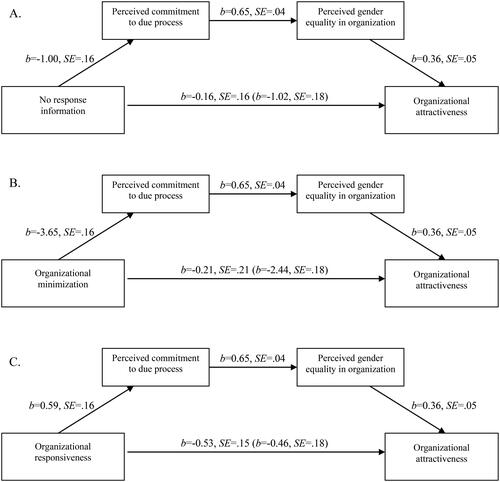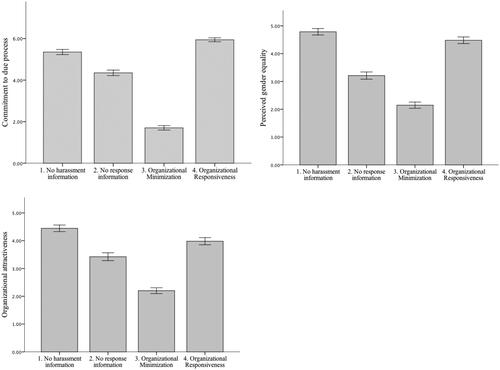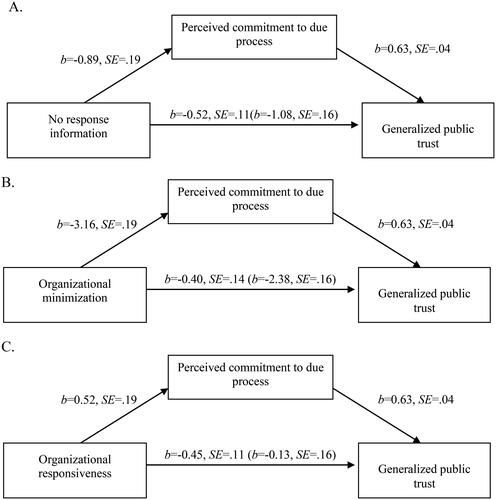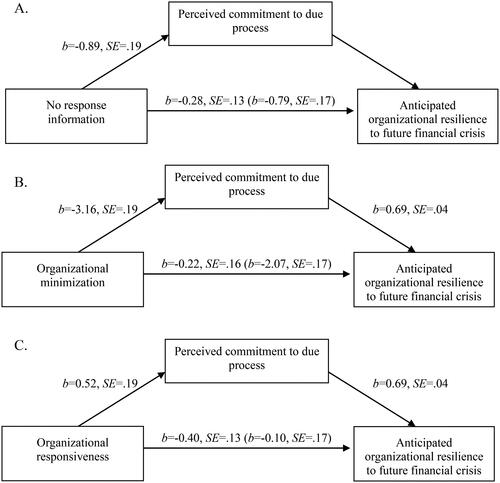Figures & data
Table 1. Means, standard deviations and inter-correlations Study 1 and Study 2.
Figure 1. Unstandardized coefficients for the indirect relationship between sexual harassment and organizational attractiveness through perceived gender equality in Study 1. Note: The effect of condition on attractiveness without the inclusion of the mediator is in parentheses.

Table 2. Means, standard deviations and inter-correlations Study 3 and Study 4.
Figure 3. Unstandardized coefficients for the indirect relationship between sexual harassment and organizational attractiveness through perceived commitment to fair process handling and perceived gender equality in Study 3. Note: The predictor is dummy-coded with the condition with no mention of sexual harassment as the reference group. The coefficients are presented for the focal dummy. The effect of the predictor on attractiveness without the inclusion of the mediator is in parentheses.

Table 3. Regression results for moderations by SDO in Study 3.




